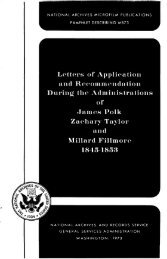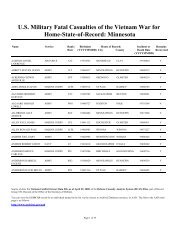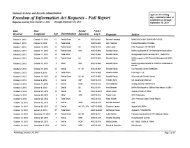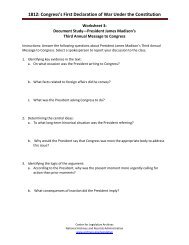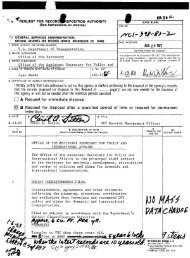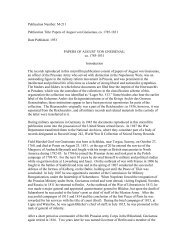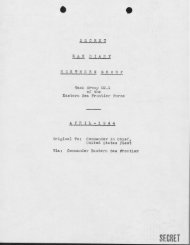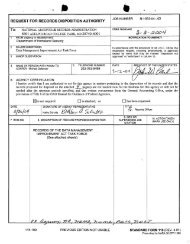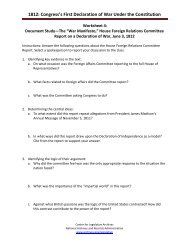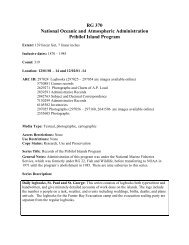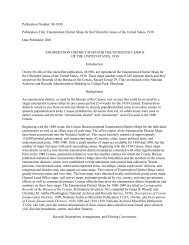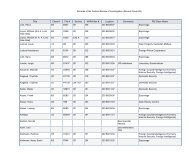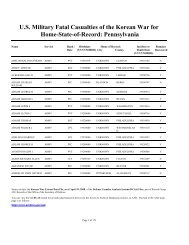HITLER'S SHADOW - National Archives and Records Administration
HITLER'S SHADOW - National Archives and Records Administration
HITLER'S SHADOW - National Archives and Records Administration
Create successful ePaper yourself
Turn your PDF publications into a flip-book with our unique Google optimized e-Paper software.
declassified documents conveys a complete story in itself; to make sense of this<br />
evidence, we have also drawn on older documents <strong>and</strong> published works.<br />
The Timing of Declassification<br />
Why did the most recent declassifications take so long? In 2005–07 the<br />
Central Intelligence Agency adopted a more liberal interpretation of the 1998<br />
Nazi War Crimes Disclosure Act. As a result, CIA declassified <strong>and</strong> turned over<br />
to the <strong>National</strong> <strong>Archives</strong> <strong>and</strong> <strong>Records</strong> <strong>Administration</strong> (NARA) additional<br />
documents from pre-existing files as well as entirely new CIA files, totaling more<br />
than 1,100 files in all. Taken together, there were several thous<strong>and</strong> pages of new<br />
CIA records that no one outside the CIA had seen previously.<br />
A much larger collection came from the Army. In the early postwar years,<br />
the Army had the largest U.S. intelligence <strong>and</strong> counterintelligence organizations<br />
in Europe; it also led the search for Nazi war criminals. In 1946 Army intelligence<br />
(G-2) <strong>and</strong> the Army Counterintelligence Corps (CIC) had little competition—<br />
the CIA was not established until a year later. Even afterwards, the Army remained<br />
a critical factor in intelligence work in central Europe.<br />
Years ago the Army facility at Fort Meade, Maryl<strong>and</strong>, turned over to NARA<br />
its classified Intelligence <strong>and</strong> Security Comm<strong>and</strong> <strong>Records</strong> for Europe from the<br />
period (approximately) 1945–63. Mostly counterintelligence records from the<br />
Army’s Investigative <strong>Records</strong> Repository (IRR), this collection promised to be<br />
a rich source of information about whether the United States maintained an<br />
interest in war crimes <strong>and</strong> Nazi war criminals.<br />
After preserving these records on microfilm, <strong>and</strong> then on a now obsolete<br />
system of optical disks, the Army destroyed many of the paper documents. But<br />
the microfilm deteriorated, <strong>and</strong> NARA could not read or recover about half of<br />
the files on the optical disks, let alone declassify <strong>and</strong> make them available. NARA<br />
needed additional resources <strong>and</strong> technology to solve the technological problems<br />
<strong>and</strong> transfer the IRR files to a special computer server. Declassification of these<br />
IRR files only began in 2009, after the IWG had gone out of existence.<br />
This new Army IRR collection comprises 1.3 million files <strong>and</strong> many millions<br />
of pages. It will be years before all of these Army files are available for researchers.<br />
2 | Introduction



